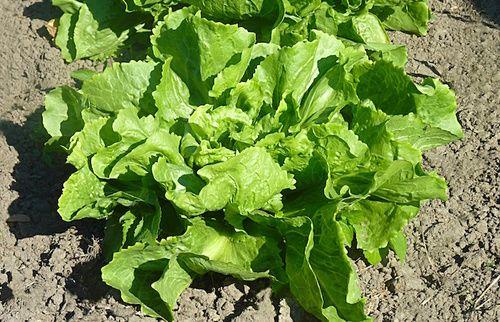The endive it is a type of bitter salad rich in vitamins A, B and C, with a tonic and slightly diuretic action. Let's find out better.
> 1. Description of the plant and variety
> 2. Properties and benefits of the endive
> 3. Calories and nutritional values of the endive
> 4. Ally of
> 5. Curiosities about the endive
> 6. How to use endive in cooking

Description of the plant and variety
Le endives (Cichorium endivia), often confused with chicory for slightly bitter taste but easily distinguishable by their more hairless leaves, they are salads that belong to the Composite family.
Curly in winter or blonde with a full heart, this vegetable typical of the central-southern regions is a vegetable originating from the Mediterranean basin that is consumed mainly in salads but also boiled, stuffed Roman-style, etc.
Endive is a biennial plant with mainly autumn production with two main varieties:
- THEendive escarole latifolium variety, with juicy and crunchy pulp, its name derives from the Latin escarius, which means “edible”. The escarole endive is a salad grown for autumn-winter productions. The rosette head is formed by elongated leaves of light or dark green color, with entire or toothed margin and marked white rib.
- Lcurly endive, crispum variety, is a winter type salad with light green leaves that do not form a heart. There are numerous varieties divided into early and late. The former include the Riccia d'el Paese, the Roman Riccia, the Riccia cuor d'oro and the Mantovana; among the late ones are the Riccia in winter, the red of Moncalieri with a white or pink coast.
Properties and benefits of endive
This vegetable is appreciated not so much for its particular nutritional qualities, as for its tonic properties, slightly diuretic (thanks to a high water content that exceeds 90%) and laxatives.
Endive is a very low-calorie and crunchy vegetable, capable of absorbing the aromas of food with which you cook. It has only one weakness: a slight bitter taste, especially at the base, which is sufficient to eliminate to ensure that it is also accepted by children.
Calories and nutritional values of endive
With Sun 15 kcal per 100 g endive is a vegetable rich in vitamin A, vitamin C, vitamins of group B (which also have an anti-hunger action), vitamin K but also, among the mineral salts, potassium and calcium.
It has a low sodium content and a good amount of iron and fiber (especially cellulose and hemicellulose which give some varieties a firm and crunchy texture).
Endive, ally of
Its concentration of vitamin C is an excellent one ally of the immune system: if 100 kcal of endive were consumed (compared to a daily energy requirement of about 2000 kcal), it would cover about 100% of the requirement of vitamin C and fiber.
Particularly rich in vitamin K, this intervenes as an anti-haemorrhagic factor in blood clotting, thus helping the blood to clot normally. The richness of potassium and the poverty of magnesium and sodium give it a diuretic power while the richness of dietary fiber favors intestinal transit.
It is among the vegetables with the highest content of folic acid, vitamin involved in reactions connected with the synthesis of the nitrogenous bases of nucleic acids (DNA and RNA) and in the differentiation of red blood cells and therefore a particularly useful vitamin in pregnancy or in the case of cardiovascular diseases.
Curiosities about the endive
- Lendive endive of Bergamo, cultivated in limited quantities in the area around the walls of the Upper Town, it is distinguished from other varieties on the market for the particular bleaching process of the internal leaves. Sown from the end of July to the end of October, it is tied with a noose, tuft by tuft, so that the internal leaves do not take light. With the first cold weather, the plants are moved to the basements where they are spread out in the dark; the inner leaves continue to mature but do not acquire color.
- Regarding the bitter taste of the endive, the Romans who indicated it with the term intybus, considered it a medicinal plant due to its bitter taste and according to the Traditional Chinese Medicine "Bitter nourishes the Fire element, tones the kidneys and balances the functionality of the spleen: getting used to consuming bitter foods, therefore, dampens the desire for sweet, purifies us and keeps us substantially in shape".
How to use the idivia in the kitchen
Endive is extremely versatile in the kitchen. One can, for example, raw snack but in this case it is necessary to make sure that they are organic salads since the leaves are the parts of the plant that absorb the most pesticides. Organic endives are recognizable by their appearance: less large and often a little greener.
It is also great stir-fried with little water (often enough water that naturally remains on the leaves after they have been washed): the leaves soften and partly lose their bitter taste. At the end of cooking, just add a little extra virgin olive oil from the first cold pressing, some soy sauce (if desired) and a sprinkling of black pepper or fresh or powdered chilli.
Belgian endive is excellent grilled but it should be enriched with flavor: at the end of cooking, a drizzle of extra virgin olive oil and a pinch of chopped parsley make it even more delicious.
In all endive dishes the advice is to add some fresh chopped herbs (sage, thyme, rosemary, etc.); just add, for example, 3 g of marjoram to 200 g of salad to increase the antioxidant capacity of this vegetable by 200%.
Endive among the foods suitable for kidney stones: discover the others
| Tropical.theferns.info


























